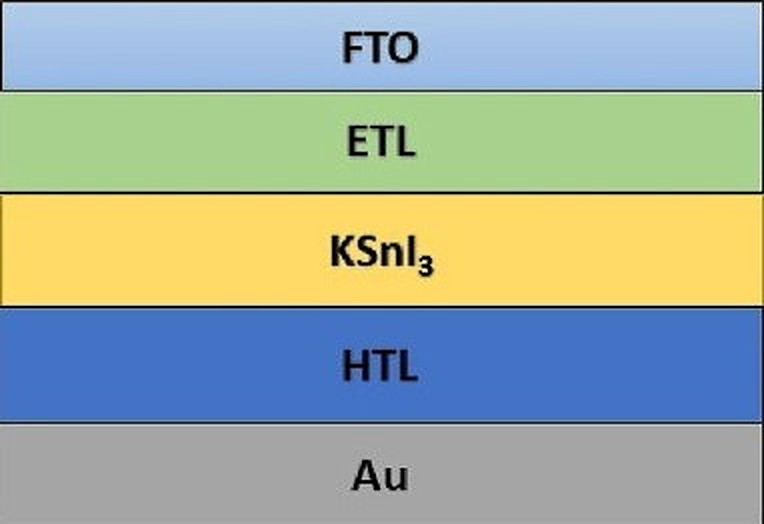Scientists at the Pandit Deendayal Energy University in India have designed a solar cell using KSnI3 as an absorber material.
KSnI3 is a perovskite material that doesn't contain lead and has already been used in solar cell applications by previous research. “This is not the first attempt at building cells based on KSnI3,” the research's corresponding author, Grishma Pindolia, told pv magazine. “Two more papers have been published by our research team in 2023 itself, which show the potential of KSnI3 as an absorber material in solar cells.”
The group used an organic electron transport layer (ETL) with optimized defect concentration and improved interface and doping density for the solar cell, claiming the use of this ETL is less expensive than that of inorganic ETLs based on materials such as titanium oxide (TiO2) . “The inorganic charge transport layers (ETLs) require complex deposition techniques, which are not very cost friendly and the reported efficiencies of perovskite solar cells with organic ETLs are higher than those with inorganic CTLs,” it explained.
The scientists used a numerical module and the SCAPS-1D solar cell capacitance software, which is a simulation tool for thin-film solar cells that was developed by the University of Ghent in Belgium, to simulate a solar cell utilizing ETLs based on either phenyl-C61-butyric acid methyl ester (PCBM) or buckminsterfullerene (C60). They also tested organic HTLs relying on spiro-OMeTAD, poly-triarylamine (PTAA), polymer Regioregular poly(3-hexylthiophene) (P3HT), PEDOT: PSS, and D-PBTTT-14.
“We optimized the defect concentration of the layers and the interfaces, doping density and thickness of the layers, and the shunt and series resistance of the device,” the scientists said, noting that they also used a gold (Au) metal contact and a fluorine-doped tin oxide (FTO) substrate for the solar cell. “The optimized thickness of PTAA, KSnI3, and C60 was 30nm, 980nm, and 10nm respectively.”
Through their simulation, the academics found the device may achieve a power conversion efficiency of 10.83% and a fill factor of 80.8%. It may also achieve an open-circuit voltage of 0.76788 V and a short-circuit current of 17.44879 mA/cm2.
The device is presented in the paper “Effect of organic charge transport layers on unleaded KSnI3 based perovskite solar cell,” published in Results in Optics. “The present work may be helpful in designing lead-free, non-toxic tin-based perovskite solar cells in the future,” the research team concluded.
This content is protected by copyright and may not be reused. If you want to cooperate with us and would like to reuse some of our content, please contact: editors@pv-magazine.com.




1 comment
By submitting this form you agree to pv magazine using your data for the purposes of publishing your comment.
Your personal data will only be disclosed or otherwise transmitted to third parties for the purposes of spam filtering or if this is necessary for technical maintenance of the website. Any other transfer to third parties will not take place unless this is justified on the basis of applicable data protection regulations or if pv magazine is legally obliged to do so.
You may revoke this consent at any time with effect for the future, in which case your personal data will be deleted immediately. Otherwise, your data will be deleted if pv magazine has processed your request or the purpose of data storage is fulfilled.
Further information on data privacy can be found in our Data Protection Policy.